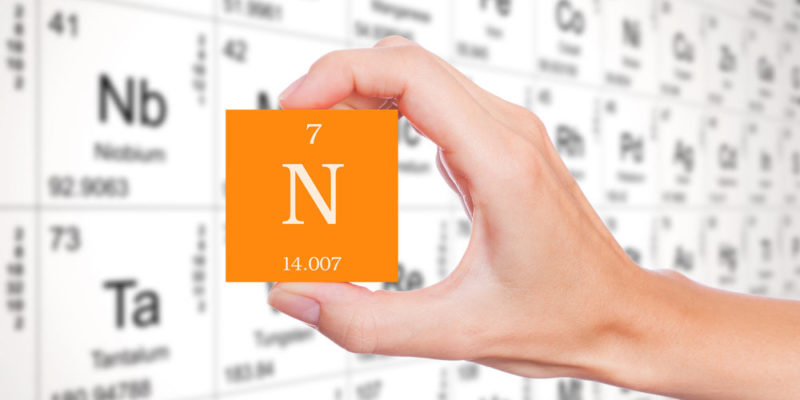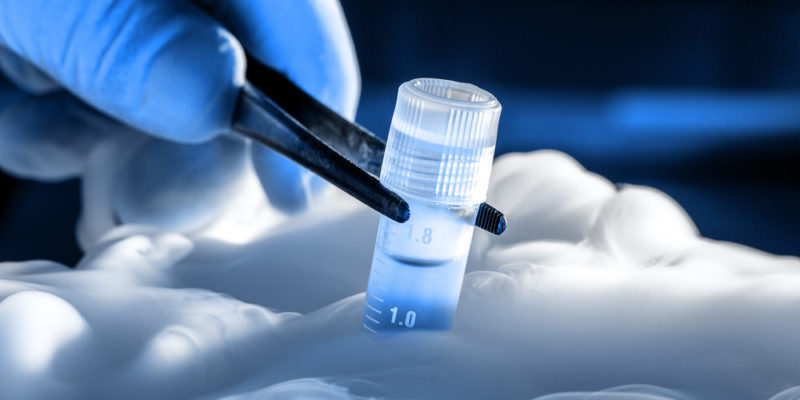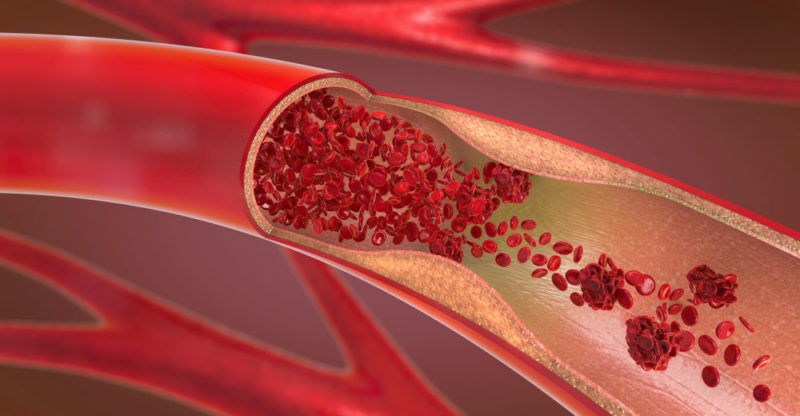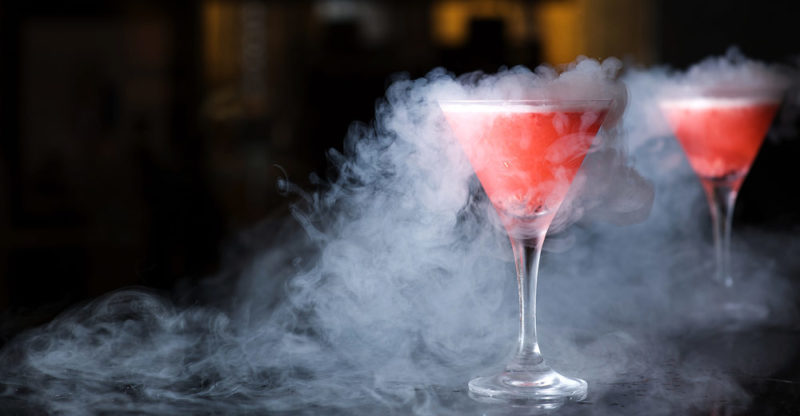We explain what nitrogen is, its atomic properties and uses. In addition, what are its characteristics and effects on health.
What is nitrogen?
Nitrogen is a chemical element that in the Periodic Table is represented by the letter “N” . Under normal conditions of pressure and temperature it occurs in a gaseous state and is called diatomic or molecular gas (N 2 ). It has an electronegativity of 3 on the Pauling scale and its atomic number is 7.
In Latin, nitrogen comes from the words nitrum (which was historically used to designate compounds of sodium and potassium that have nitrogen) and geno (which means to generate).
Although it had been used very precariously since the Middle Ages , Scheele was the first scientist to isolate this element from the rest of the particles found in the air .
Physical properties of nitrogen
Nitrogen is an odourless, colorless and tasteless gas that makes up 78% of the air we breathe. It is a nonmetal that is in a gaseous state at normal pressure and temperature. Its melting point is -210 ºC and its boiling point is -195.79 ºC. On the other hand, it has a density of 1.25046 kg/m 3 and is not a good conductor of electricity or heat.
nitrogen isotopes
The stable isotopes of nitrogen are 14N and 15N , with the former being much more abundant than the latter. In addition, other isotopes of radioactive origin can be found, such as 12 N, 13 N, 16 N and 17 N.
Atomic Properties of Nitrogen

- Atomic Weight: 14.0067 amu (atomic mass unit)
- Atomic number: 7
- Symbol: N
- Atomic radius: 56 pm (picometers)
- Oxidation States: -3, +1, +2, +3, +4, +5
Nitrogen aggregation states
In nature, nitrogen is found in the gaseous state . However, man has been able to transform this state into liquid and solid through variations in temperature and pressure.
Although its most notable uses are in the liquid state , it is important to note that liquid nitrogen should be used only for specific purposes and taking into account the appropriate precautions.
Being its temperature very low in liquid state, it can damage the skin and generate cold burns.
Obtaining nitrogen

This non-metal can be obtained through the implementation of various processes. Among the most used are fractional distillation and air liquefaction , since nitrogen occupies 78% of the air.
Nitrogen abundance

In addition to being present in the air we breathe as the main element, we find nitrogen in food, plants , fertilizers, poisonous substances and even in explosives . Also, the isotope nitrogen-14 is found in stars , where it is formed by nuclear fusion.
nitrogen structure
Nitrogen is made up of two types of isotopes: N14 and N15 . In addition, other types of isotopes of radioactive origin can be found, such as N12, N13, N16 and N17, which is why in the liquid or solid state it must be handled with special care.
Role of nitrogen in nature
Nitrogen makes an important contribution to the environment : without this element, life on earth would not be possible . This element is part of proteins and nucleic acids (DNA and RNA), which means that it is part of the basis of life.
Although there is a large amount of nitrogen in gaseous state (N 2 ) in the earth’s atmosphere , it is very difficult for plants to incorporate it in this way, so they assimilate it in the form of ammonium ions (NH 4 + ) or nitrates (NO 3 – ). Because of this, some bacteria transform nitrogen into these forms that plants can absorb, so that animals can then ingest the plants and, through this process, incorporate the nitrogen.
In other words, without the presence of nitrogen, bacteria would not be able to convert the soil into a fertile base for plants . For this reason, nitrogen is considered to be involved in the life cycle of ecosystems .
Nitrogen utilities

Among the functions of nitrogen, we find the following:
- As a preservative for packaged foods, since it stops their oxidation.
- The light bulbs have nitrogen, which turns out to be more accessible than when argon was used.
- It is used in liquid explosives to prevent them from exploding.
- It is used for the manufacture of electronic parts such as transistors or integrated circuits.
- It is used in jet fuels as it helps prevent fire hazards.
- Liquid nitrogen helps in the preservation of blood and platelets.
- It is present in almost all pharmacological drugs that are consumed (nitrous oxide is used as anesthesia).
- It is used to make stainless steel.
- It is used to produce fertilizers.
Effects of nitrogen on the body

Nitrogen in its natural state is found in the air as molecular nitrogen (N 2 ); in soil and water it is found forming compounds such as nitrates (NO 3 – ) and nitrites (NO 2 – ).
This nitrogen compound does not turn out to be so beneficial to health. Some of its main effects are the following:
- Decreases the transport of oxygen in the blood.
- It slows down the functioning of the thyroid gland.
- It does not allow the correct fixation of vitamin A in the organism.
- It encourages the production of a substance called nitrosamine , which is responsible for cell mutation (cancer).
Curiosity: nitrogen in the colors of the sky

This element, along with oxygen, is responsible for the blue, green, violet, orange, and red colors that appear in the sky. Not only in the rainbow but also in a sunset.
The above content published at Collaborative Research Group is for informational and educational purposes only and has been developed by referring reliable sources and recommendations from technology experts. We do not have any contact with official entities nor do we intend to replace the information that they emit.














